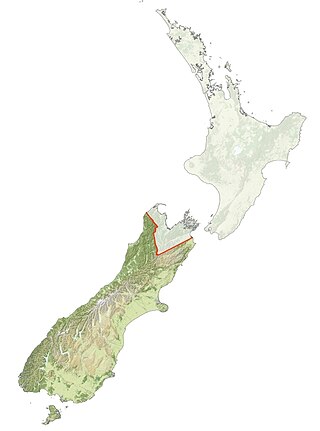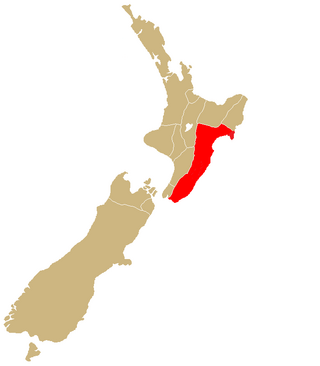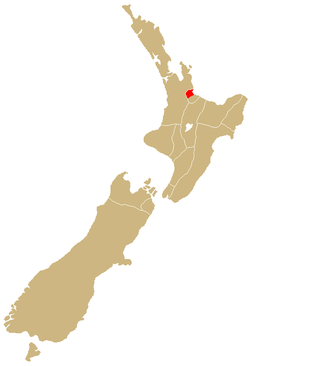Tamatea may refer to:
Tamatea may refer to:

Ngāi Tahu, or Kāi Tahu, is the principal Māori iwi (tribe) of the South Island. Its takiwā is the largest in New Zealand, and extends from the White Bluffs / Te Parinui o Whiti, Mount Mahanga and Kahurangi Point in the north to Stewart Island / Rakiura in the south. The takiwā comprises 18 rūnanga corresponding to traditional settlements. According to the 2018 census an estimated 74,082 people affiliated with the Kāi Tahu iwi.

Ngāti Kahungunu is a Māori iwi located along the eastern coast of the North Island of New Zealand. The iwi is traditionally centred in the Hawke's Bay and Wairārapa regions. The Kahungungu iwi also comprises 86 hapū (sub-tribes) and 90 mārae.

Otakou is a settlement within the boundaries of the city of Dunedin, New Zealand. It is located 25 kilometres from the city centre at the eastern end of Otago Peninsula, close to the entrance of Otago Harbour. Though a small fishing village, Otakou is important in the history of Otago for several reasons. The settlement is the modern centre and traditional home of the Ōtākou rūnanga (assembly) of Ngāi Tahu. In 1946 Otakou Fisheries was founded in the township; this was later to become a major part of the Otago fishing industry.
Mangakino is a small town on the banks of the Waikato River in the North Island of New Zealand. It is located close to the hydroelectric power station at Lake Maraetai, 85 kilometres (53 mi) southeast of Hamilton. The town and its infrastructure are administered as the Mangakino Pouakani ward by the Taupō District Council.
Tākitimu was a waka (canoe) with whakapapa throughout the Pacific particularly with Samoa, the Cook Islands, and New Zealand in ancient times. In several Māori traditions, the Tākitimu was one of the great Māori migration ships that brought Polynesian migrants to New Zealand from Hawaiki. The canoe was said to be captained by Tamatea.

Ngāti Rongomaiwahine or Rongomaiwahine is a Māori iwi (tribe) traditionally centred in the Māhia Peninsula on the North Island of New Zealand. In the 2006 census, 4,254 people identified as Rongomaiwahine; by the 2013 census, this has increased to 4,473 people. It is closely connected to the Ngāti Kahungunu iwi.

Kohukohu is a village on the Hokianga Harbour in the Northland Region of New Zealand. It was one of the first European settlements in New Zealand.

Ngāti Ranginui is a Māori iwi (tribe) in Bay of Plenty, New Zealand. Its rohe extends from Waihi in the north, to the Kaimai Range in the west, to south of Te Puke in the south, and to Tauranga in the east. The rohe does not extend offshore to Matakana Island or Mayor Island / Tuhua.
Mohaka is a small settlement in the northern Hawke's Bay region of the eastern North Island of New Zealand. It is located on the coast of Hawke Bay, 20 kilometres southwest of Wairoa.

Nūhaka is a small settlement in the northern Hawke's Bay Region of New Zealand's eastern North Island, lying on State Highway 2 between Wairoa and Gisborne. The road to Mahia turns off the highway at Nūhaka.
Whatatutu is a small settlement in the northeast of New Zealand's North Island. It is located north of Te Karaka on the upper reaches of the Waipaoa River, close to its meeting with its tributaries, the Mangatu River and Waingaromia River.
Whangara is a small community in the northeast of New Zealand's North Island, located between Gisborne and Tolaga Bay, five kilometres southwest of Gable End Foreland and two kilometres east of State Highway 35.
Ngāti Rakaipaaka is a Māori hapu (subtribe), from the Nūhaka area of northern Hawke's Bay on New Zealand's North Island. It is a subtribe of Ngāti Kahungunu.
Ngāti Te Whatuiāpiti, Ngāti Te Whatu-i-āpiti or Ngāi Te Whatuiāpiti is a Māori hapū of the Ngāti Kahungunu iwi in Hawke's Bay, New Zealand.

Ngāti Maru or Te Iwi o Maruwharanui is a Māori iwi of inland Taranaki in New Zealand. They are descended from Maruwharanui, the eldest son of Pito Haranui and his wife Manauea. Pito Haranui belonged to an ancient Taranaki people known as the Kāhui-Maru, whose genealogy predates the arrival of Toi.

Rongomaraeroa is the marae of the Museum of New Zealand Te Papa Tongarewa and incorporates a contemporary wharenuiTe Hono ki Hawaiki. It is located on the museum's 4th floor overlooking Wellington harbour, and was officially opened on 30 November 1997.
Ngāti Kahungunu ki Tamatea is a tribal division within the Māori iwi (tribe) of Ngāti Kahungunu in the south-east of New Zealand's North Island. It consists of a number of hapū (sub-tribes) located within a rohe predominantly within the Central Hawke's Bay District.
Maungaharuru Tangitū is a collective of Māori hapū (subtribes) of the Ngāti Kahungunu iwi in Hawke's Bay, New Zealand, who joined forces for Treaty of Waitangi settlement negotiations. The hapū are Marangatūhetaua, Ngāi Tauira, Ngāi Te Ruruku ki Tangoio, Ngāi Tahu, Ngāti Kurumōkihi and Ngāti Whakaari. The group's rohe ranges from Bay View in the south to the Waitaha Stream in the north, and from the Maungaharuru Range in the west to the sea in Hawke Bay, that part of the sea being known as Tangitū.
Ruakituri is a rural area in the northern Hawke's Bay region of New Zealand's eastern North Island, located north of Wairoa and west of Gisborne. The 2013 New Zealand census recorded 708 people living in the Ruakituri-Morere area.
Tamatea Urehaea also known as Tamatea Pōkai-whenua and Tamatea Pōkai-moana was a Māori ariki (chieftain) of the Tākitimu tribal confederation and ancestor of the Ngāti Kahungunu iwi, who probably lived in the fifteenth century. He is famous as an explorer who circumnavigated both islands of New Zealand. After he was expelled from his base at Kaitaia, he settled in Hawke's Bay, but continued to explore the North Island.